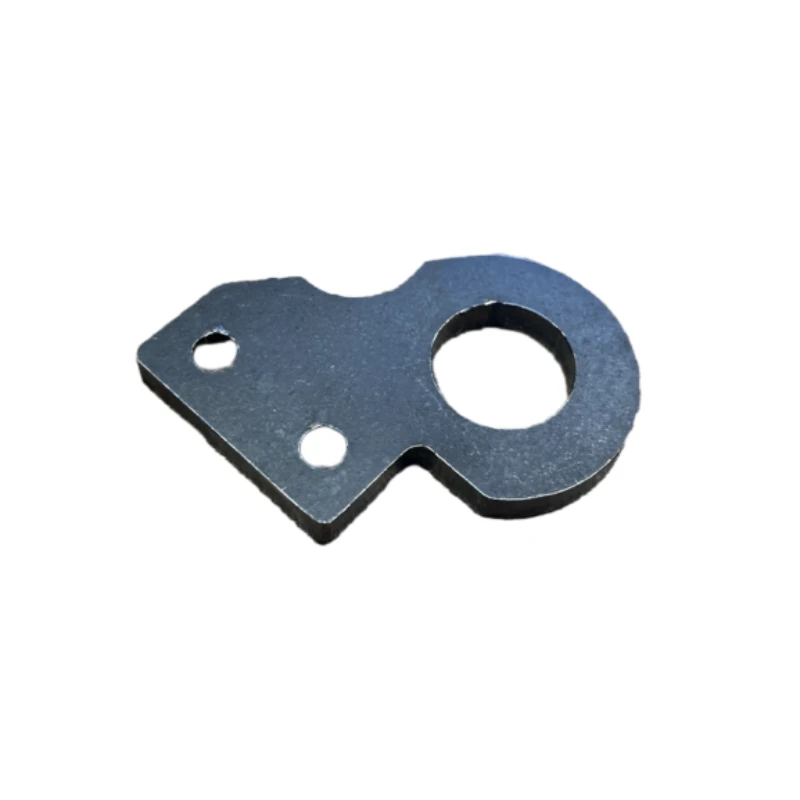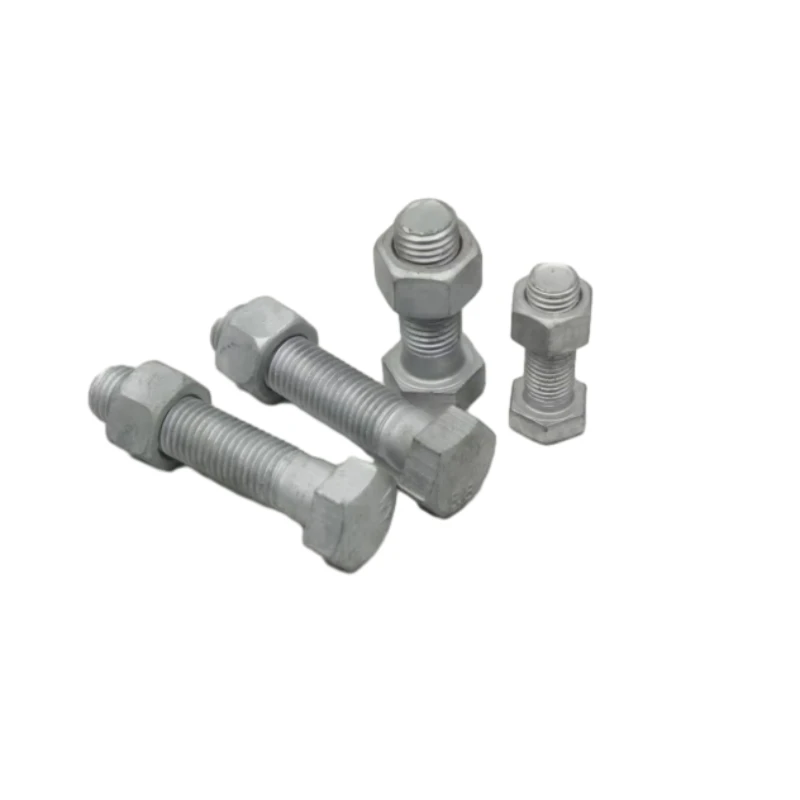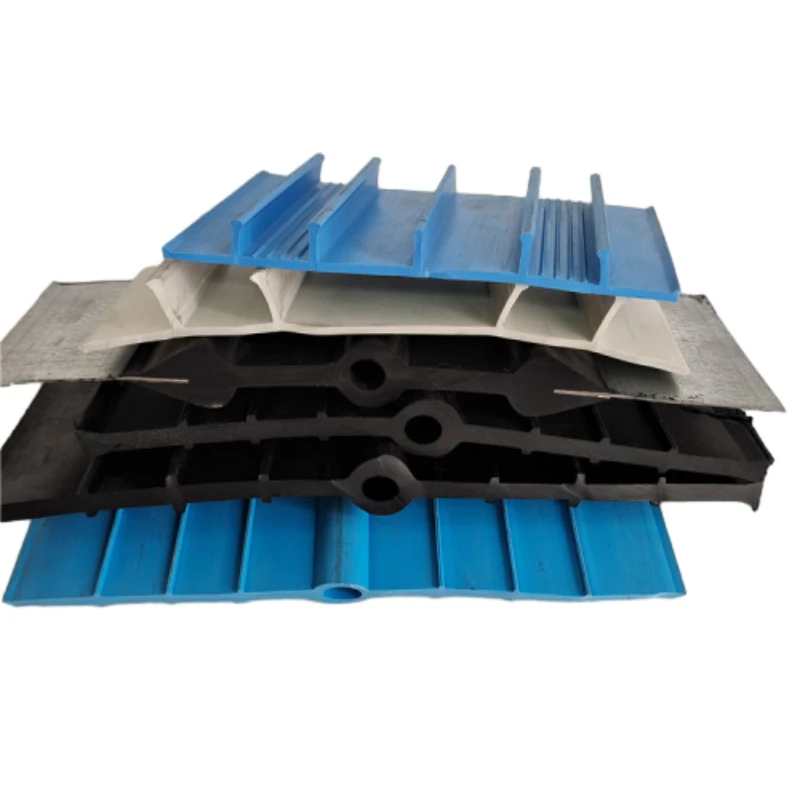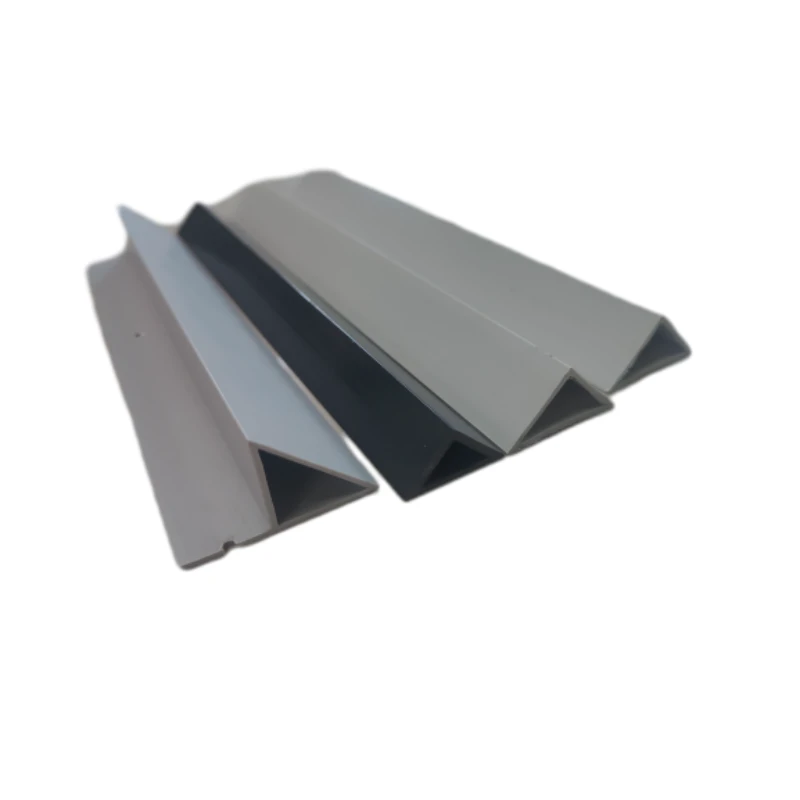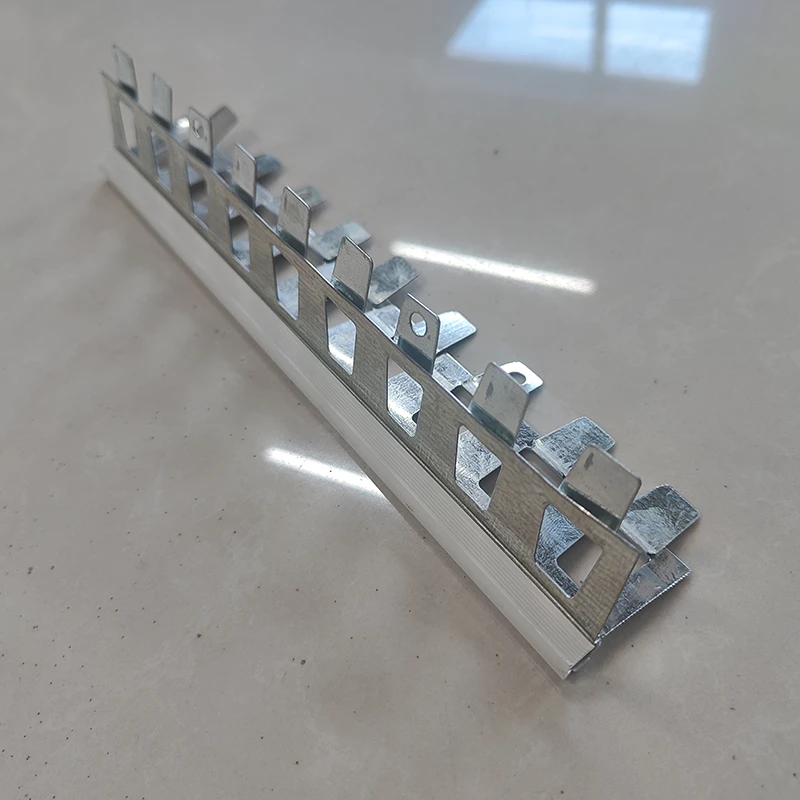- Phone: +86 132 8320 1810
- Email: annie@wrkgroup.ltd
-
- Afrikaans
- Albanian
- Amharic
- Arabic
- Armenian
- Azerbaijani
- Basque
- Belarusian
- Bengali
- Bosnian
- Bulgarian
- Catalan
- Cebuano
- China
- China (Taiwan)
- Corsican
- Croatian
- Czech
- Danish
- Dutch
- English
- Esperanto
- Estonian
- Finnish
- French
- Frisian
- Galician
- Georgian
- German
- Greek
- Gujarati
- Haitian Creole
- hausa
- hawaiian
- Hebrew
- Hindi
- Miao
- Indonesian
- Italian
- Japanese
- Javanese
- Malay
- Persian
- Portuguese
- Punjabi
- Russian
- Spanish
- Swahili
- Telugu
- Vietnamese
Aug . 10, 2025 05:40 Back To List
Secure Formwork Clamps for Concrete & Column Construction
The Indispensable Role of Formwork Clamps in Modern Construction and Industry Trends
In the intricate world of civil engineering and construction, the integrity and precision of concrete structures hinge significantly on the robustness and reliability of their foundational support systems. Among these critical components, the formwork clamp stands out as an unsung hero, playing an indispensable role in securing formwork panels to withstand immense hydrostatic pressures exerted by wet concrete. This small yet mighty device is fundamental to achieving accurate dimensions, smooth finishes, and, ultimately, the structural integrity of poured concrete elements such as walls, columns, beams, and slabs. The evolution of the construction industry, driven by demands for greater efficiency, safety, and sustainability, has correspondingly propelled innovations in formwork technology, with particular emphasis on enhanced performance, durability, and reusability of formwork accessories. Current industry trends reveal a clear shift towards modular, lightweight, and high-strength formwork systems that significantly reduce labor costs and construction timelines. This transition necessitates advanced clamping solutions that are not only easy to install and adjust but also capable of enduring harsh environmental conditions and repetitive use without compromising their structural integrity. Furthermore, the global push for infrastructure development, particularly in emerging economies, is fueling an unprecedented demand for reliable formwork solutions. From towering skyscrapers and expansive bridges to critical public infrastructure projects like tunnels and dams, the foundational requirement for secure formwork remains constant. The market for formwork components, including sophisticated clamp formwork systems, is experiencing robust growth, influenced by factors such as increasing urbanization, government investments in infrastructure, and the adoption of prefabrication and modular construction techniques. These trends underscore the paramount importance of selecting high-quality concrete formwork clamps that can adapt to diverse project scales and complexities. The shift towards engineered timber, steel, and aluminum formwork systems, as opposed to traditional timber, also dictates specialized clamping mechanisms that provide superior grip and alignment. Manufacturers are continually investing in research and development to produce clamps that offer higher clamping forces, improved corrosion resistance, and ergonomic designs for quicker setup and dismantling. As projects become more complex and tight deadlines become the norm, the efficiency gains offered by advanced column clamps and other specialized formwork accessories are becoming a decisive factor for contractors seeking competitive advantages. The meticulous selection and deployment of these essential components are not merely operational necessities but strategic decisions that directly impact project success, safety records, and long-term structural performance. This comprehensive overview sets the stage for a deeper exploration into the technical aspects, manufacturing processes, and diverse applications that define the modern formwork clamp market.
The Meticulous Manufacturing Journey of High-Performance Formwork Clamps
The production of a high-quality formwork clamp is a testament to precision engineering, drawing upon advanced metallurgical knowledge and state-of-the-art manufacturing processes to ensure maximum strength, durability, and operational safety. The journey begins with the careful selection of raw materials, typically high-grade carbon steel or alloy steel, chosen for their superior tensile strength, yield strength, and resistance to fatigue and deformation under extreme load. For specialized applications demanding enhanced corrosion resistance, stainless steel or galvanized steel variants are employed. The manufacturing process often involves a combination of sophisticated techniques such as casting, forging, and CNC machining, each contributing uniquely to the clamp's final characteristics. Casting, a traditional yet highly effective method, involves pouring molten metal into a mold cavity designed to the exact specifications of the clamp's body, ensuring complex geometries are accurately formed. This process is particularly vital for components requiring intricate shapes and integrated features. Forging, on the other hand, involves shaping solid metal through localized compressive forces using hammers or presses. This method enhances the grain structure of the metal, eliminating internal defects and significantly improving the material's strength, toughness, and fatigue resistance, making it ideal for the load-bearing components of concrete formwork clamps. Post-forging, critical surfaces and connecting points often undergo CNC (Computer Numerical Control) machining, a highly precise subtractive manufacturing process that removes material from a workpiece using computer-controlled tools. CNC machining ensures exceptionally tight tolerances, smooth finishes, and accurate dimensions, which are paramount for the consistent performance and interchangeability of components in a clamp formwork system. Following these primary shaping processes, a series of heat treatments, such as quenching and tempering, are applied to optimize the mechanical properties of the steel, increasing its hardness, strength, and resilience while maintaining ductility. Surface treatments, including hot-dip galvanization or powder coating, are then applied to provide superior protection against rust, abrasion, and chemical exposure, significantly extending the service life of the formwork clamp, especially in harsh construction environments where exposure to concrete chemicals, water, and varying temperatures is constant. Throughout the entire manufacturing chain, rigorous quality control measures are implemented at every stage. This includes material composition analysis using spectrographs, non-destructive testing (NDT) such as ultrasonic testing or magnetic particle inspection to detect internal flaws, and comprehensive dimensional checks using precision gauges. Products are subjected to stringent performance tests, including load-bearing capacity tests, fatigue tests, and corrosion resistance tests, all conducted in accordance with international standards such as ISO 9001 for quality management, ANSI (American National Standards Institute) standards for product performance, and various European Norms (EN) for construction products. These meticulous inspection standards ensure that each formwork clamp meets the highest benchmarks for safety and reliability, offering a typical service life exceeding thousands of cycles of use, even under challenging conditions. Such robust manufacturing practices make these clamps suitable for a diverse range of industries beyond general construction, including petrochemical facilities where their corrosion resistance is critical, large-scale metallurgical plants requiring heavy-duty fastening solutions, and municipal water supply and drainage projects where long-term durability in varied conditions is essential. In typical application scenarios, such as the construction of high-rise concrete walls or intricate column structures, the superior material strength and precision manufacturing of these clamps translate directly into enhanced operational efficiency, offering energy savings through reduced re-work and superior anti-corrosion properties that minimize maintenance costs over the project's lifecycle.

Unpacking the Technical Specifications and Performance Metrics of Advanced Formwork Clamps
Understanding the technical parameters of a formwork clamp is paramount for engineers and project managers aiming to optimize structural integrity, safety, and operational efficiency on construction sites. These specifications are not merely numbers; they represent the culmination of rigorous design, material science, and testing protocols that determine a clamp’s suitability for specific applications. Key parameters include the maximum permissible load, often expressed in kiloNewtons (kN) or tons, which indicates the highest force the clamp can withstand before yielding or failing. This metric is critical for ensuring the formwork can safely contain the hydrostatic pressure of freshly poured concrete, which can be substantial, especially for tall concrete elements. Another vital specification is the clamping range or jaw opening, defining the maximum and minimum thickness of formwork panels or timber walers the clamp can securely grip. This range dictates the versatility of the clamp across various formwork systems, from standard timber beams to engineered steel profiles used in heavy-duty concrete formwork clamps. Material composition, as discussed, is fundamental; specifying high-strength low-alloy steel (HSLA) or equivalent grades ensures superior performance. Surface treatment specifications, such as zinc plating thickness for corrosion resistance (e.g., 80 microns for hot-dip galvanization per ASTM A123) or powder coating specifications, directly impact the clamp's longevity and performance in corrosive environments. The weight of the clamp, while seemingly minor, affects logistical planning, labor ergonomics, and overall system weight, particularly for large-scale projects where thousands of concrete formwork clamps may be deployed. Furthermore, design features like quick-release mechanisms, self-locking functions, and adjustability features enhance operational efficiency and reduce setup and dismantling times, thereby lowering labor costs. Beyond these core physical parameters, performance metrics derived from certified testing are crucial. These include ultimate tensile strength (UTS) and yield strength (YS) of the raw material, fatigue life (the number of cycles a clamp can endure under specified loads before failure), and environmental resistance tests (e.g., salt spray tests for corrosion resistance per ASTM B117 standards). For instance, a typical high-performance column clamp might feature an ultimate tensile strength of 600-750 MPa and a yield strength of 400-500 MPa, providing a robust safety margin. Load tests, conducted under controlled laboratory conditions, often demonstrate a safety factor of 2.5:1 or 3:1 against the stated working load limit, providing engineers with confidence in their designs. Compliance with international standards such as EN 12812 for formwork performance, ISO 9001 for quality management systems, and specific regional certifications like CE marking for European markets or relevant ANSI/ASME standards for North America, further solidifies a manufacturer's commitment to quality and safety. These technical specifications not only ensure the integrity of the concrete structure during curing but also contribute to the overall safety of the construction site, mitigating risks associated with formwork failure. An in-depth understanding of these technical nuances allows contractors to select the most appropriate clamping solutions for their specific project requirements, balancing cost-effectiveness with performance and long-term reliability.
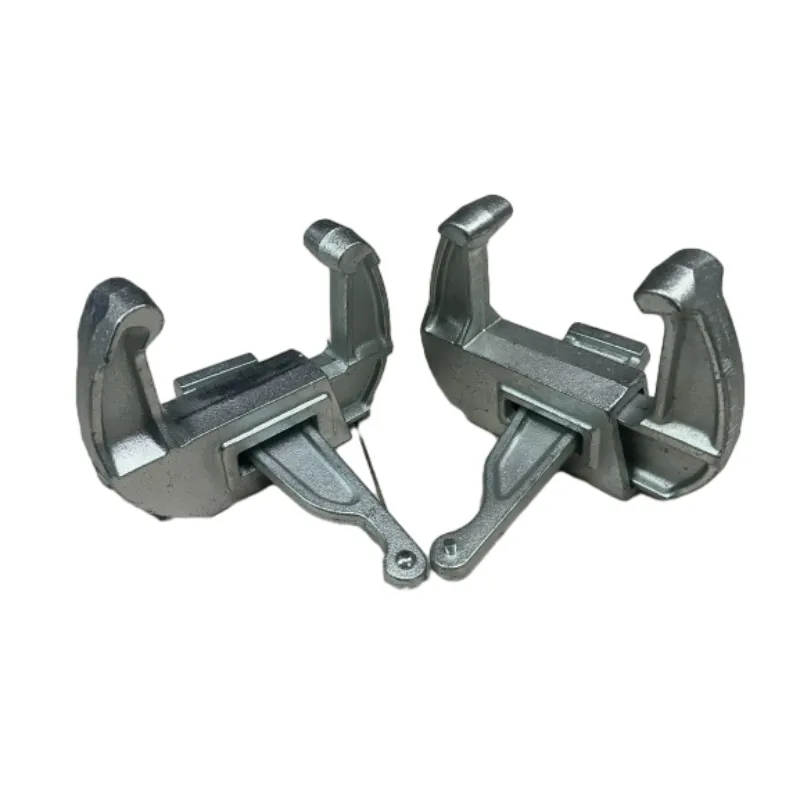
Typical Formwork Clamp Parameter Overview
| Parameter | Description | Typical Range / Value | Relevant Standard |
|---|---|---|---|
| Material | High-grade carbon steel (e.g., Q235, Q345) or alloy steel (e.g., 40Cr) | Tensile Strength: 400-750 MPa; Yield Strength: 250-500 MPa | ASTM A36, EN 10025, GB/T 700 |
| Surface Treatment | Hot-dip Galvanized, Electro-Galvanized, Powder Coated | HDG: 60-85 microns; EG: 10-20 microns | ASTM A123, ISO 1461, ASTM B633 |
| Max Working Load (WLL) | Maximum safe load capacity a single clamp can bear | Typically 20-50 kN per clamp (depending on type) | EN 12812, AS/NZS 1576 |
| Clamping Range | Adjustable range for panel/waler thickness | Typical: 15-400 mm (various models) | Manufacturer's Specification |
| Weight | Approximate weight per unit | 1.5 - 5.0 kg (depending on size and type) | Manufacturer's Specification |
| Service Life | Estimated lifespan under normal use and maintenance | 1000+ cycles of use; 10-15 years average | Fatigue Testing Protocols |
| Safety Factor | Ratio of ultimate breaking strength to working load limit | Min. 2.5:1 to 3:1 | Industry Best Practice, Design Codes |
Versatile Applications and Strategic Advantages of Robust Formwork Clamps
The adaptability and robust performance of modern formwork clamp systems make them indispensable across a spectrum of construction and industrial applications, extending far beyond the conventional pouring of concrete slabs. Their primary utility lies in securing and aligning formwork panels, whether made of timber, plywood, steel, or aluminum, to create the desired shape for concrete elements. In residential and commercial building construction, formwork clamps are crucial for casting concrete walls, columns, and beams, ensuring dimensional accuracy and structural integrity. For instance, in multi-story buildings, specialized formwork clamp systems are employed to support vertical pours, managing the immense lateral pressure of liquid concrete. In infrastructure projects, such as bridge construction, tunnel lining, and dam building, the scale and complexity demand high-strength concrete formwork clamps that can withstand significant loads and operate under challenging environmental conditions. Bridges, in particular, often involve large-span concrete girders or abutments that require exceptionally rigid and precise formwork, making the choice of reliable clamping solutions critical. Tunnels, whether for transportation or utility conduits, utilize circular or arched formwork sections that necessitate specialized column clamps or adjustable clamps to maintain the precise curvature and uniform thickness of the concrete lining. Furthermore, beyond general civil engineering, these clamps find critical applications in specialized industrial sectors. In petrochemical facilities, where structures must withstand corrosive environments and extreme temperatures, specially coated or stainless steel formwork clamps are used for building robust containment walls, foundations for heavy machinery, or specialized concrete structures that support pipelines and processing units. Their anti-corrosion properties ensure the longevity of both the clamp and the concrete structure it helps form, minimizing the need for frequent maintenance and costly repairs. Similarly, in metallurgy, particularly in the construction of foundations for heavy industrial furnaces, rolling mills, or casting shops, the need for exceptionally strong and heat-resistant concrete elements translates into a demand for formwork clamps capable of handling high-density concrete and extreme pressures. In water supply and drainage projects, formwork clamps are integral to the construction of water treatment plants, pumping stations, reservoirs, and large-diameter concrete pipes, where watertightness and precise alignment are paramount. The technical advantages of advanced formwork clamps contribute directly to project efficiency and overall cost savings. Their quick installation and dismantling features significantly reduce labor time, which is a major operational expenditure in construction. The reusability of high-quality clamps across multiple projects, sometimes for thousands of cycles, offers substantial long-term economic benefits by reducing material waste and procurement costs. Moreover, the precision offered by modern clamping systems ensures a higher quality finish for concrete surfaces, often reducing the need for post-pour rectification work such as plastering or grinding, which directly translates to time and cost savings. Enhanced safety is another critical advantage; by providing secure and stable formwork, these clamps mitigate the risks of formwork collapse, which can have catastrophic consequences for personnel and project timelines. The ability of specialized clamps, like those inspired by Doka clamp or Peri clamp designs, to integrate seamlessly into proprietary formwork systems further enhances their utility, offering bespoke solutions for complex architectural or structural designs. The emphasis on energy saving, while not directly tied to the clamp's operational energy consumption, is realized through the efficiency gains: reduced labor, less material wastage, and fewer errors mean a more streamlined and resource-efficient construction process. The superior anti-corrosion treatments, as highlighted earlier, ensure that these vital components retain their structural integrity and aesthetic quality over extended periods, even in highly aggressive environments, providing a true long-term investment for any construction or industrial project.
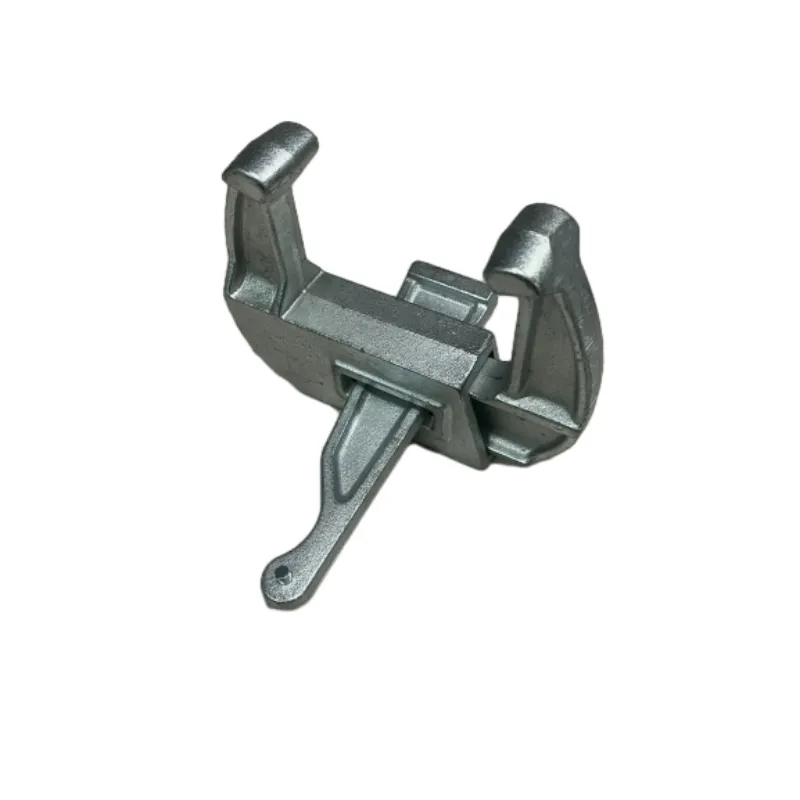
Navigating the Market: Manufacturer Comparison and Tailored Formwork Clamp Solutions
In a competitive global market, selecting the right supplier for formwork clamp solutions requires a meticulous evaluation of various manufacturers, considering not just product specifications but also service capabilities, industry reputation, and the ability to provide customized solutions. Leading manufacturers often distinguish themselves through a combination of superior material quality, advanced manufacturing techniques, rigorous quality control, and extensive technical support. For instance, while a standard clamp formwork might seem universally applicable, the subtle differences in design, metallurgy, and surface treatment among manufacturers can significantly impact performance, longevity, and ease of use. Established brands often invest heavily in R&D, leading to patented designs that offer enhanced safety features, faster installation times, or greater adaptability. When comparing manufacturers, key differentiators include the range of products offered (e.g., specific concrete formwork clamps for different systems like modular panel systems, timber beam systems, or steel frame systems), adherence to international certifications (ISO 9001, CE, ASTM, ANSI), and the provision of comprehensive technical documentation, including load tables and installation guides. A critical aspect for B2B decision-makers is the manufacturer's capability for customization. Many projects, especially those with unique architectural designs or challenging site conditions, require bespoke formwork solutions. This might involve custom-length tie rods, specialized column clamps for unusually shaped columns, or clamps designed to integrate with a specific proprietary formwork system (like Doka clamp or Peri clamp designs, which are often imitated or adapted). A reputable manufacturer should possess the engineering expertise and manufacturing flexibility to design and produce tailored formwork clamps that meet precise project requirements, often leveraging CAD/CAM technologies and rapid prototyping. This includes custom dimensions, specific material grades for extreme environments (e.g., marine-grade steel for coastal projects), or enhanced corrosion protection for chemical processing plants. The ability to consult with clients, understand their project-specific challenges, and propose optimized clamping solutions demonstrates true partnership and technical authority. Furthermore, a manufacturer's service history, client testimonials, and willingness to provide references are crucial indicators of trustworthiness and reliability. Companies with decades of experience in the formwork industry often have a deeper understanding of real-world construction challenges and can offer invaluable insights. The availability of post-sales support, including on-site technical assistance, training for installation crews, and readily available spare parts, is also a significant factor that differentiates top-tier suppliers. For example, a supplier offering detailed product data sheets, performance curves based on extensive testing, and an accessible technical support hotline provides immense value beyond the physical product. Ultimately, the decision to partner with a particular manufacturer for formwork clamp solutions is an investment in quality, efficiency, and safety. A comprehensive evaluation that goes beyond the initial price tag to consider long-term value, customization capabilities, and unwavering support will yield the most beneficial outcomes for any construction project, ensuring that the formwork system performs optimally under all conditions and contributes positively to project deadlines and budget adherence.
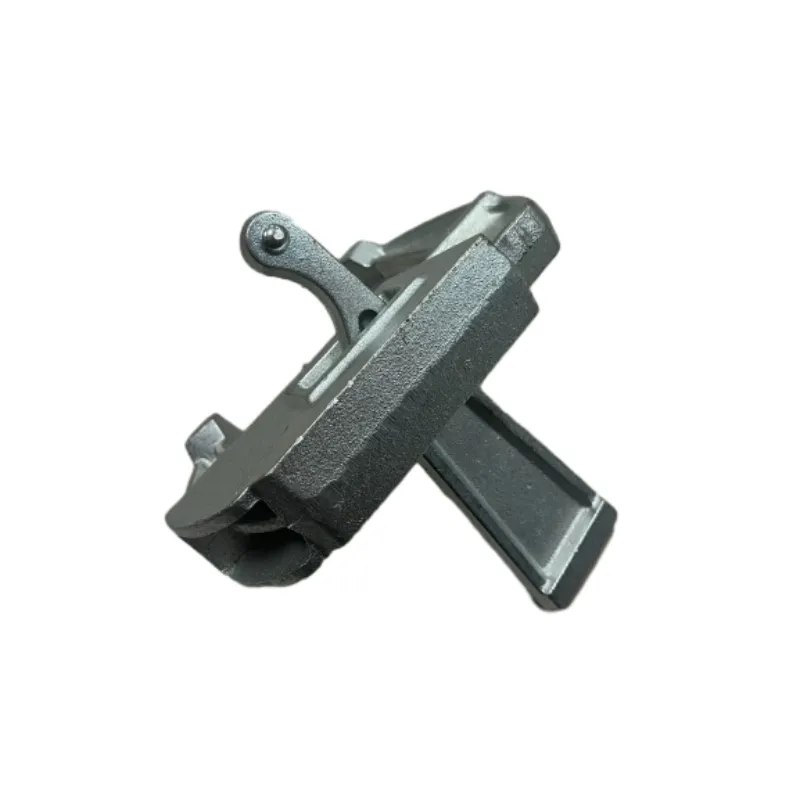
Manufacturer Comparison: Key Differentiators
| Feature | Leading Manufacturer (e.g., WRK Formwork) | Standard Manufacturer |
|---|---|---|
| Material Sourcing | Premium Certified Steel (e.g., S235JR, S355JO, 40Cr) | Standard Commercial Steel (less traceable origin) |
| Manufacturing Process | Precision Forging, Robotic Welding, CNC Machining, Controlled Heat Treatment | Basic Stamping, Manual Welding, Limited Machining, Standard Heat Treatment |
| Quality Control | ISO 9001 Certified, NDT, In-house Lab Testing (Tensile, Fatigue, Corrosion) | Basic Visual Inspection, Third-party Spot Checks |
| Customization Capabilities | Full R&D, CAD/CAM Design, Bespoke Solutions for Unique Projects | Limited to Standard Product Modifications |
| Technical Support | Dedicated Engineering Support, On-site Training, Comprehensive Documentation | Basic Product Information, Minimal Post-Sales Support |
| Certifications | CE, ISO, relevant regional standards (e.g., ANSI, AS/NZS) | May only have basic internal certifications |
| Warranty & Service Life | Extended Warranty, Documented Service Life (10-15+ years or thousands of cycles) | Limited Warranty, Undocumented Service Life |
Real-World Impact: Illustrative Case Studies and Client Successes with Formwork Clamps
The theoretical advantages and technical specifications of a formwork clamp truly materialize when demonstrated through compelling real-world application cases and client testimonials. These narratives provide tangible evidence of the product's performance, durability, and the value it brings to complex construction projects. Consider, for example, the construction of a large-scale data center in a seismic zone, demanding exceptionally rigid and dimensionally precise concrete shear walls. In this scenario, the selection of high-performance concrete formwork clamps with verifiable load capacities and stringent quality certifications (e.g., tested to meet ASTM E72 for structural performance) became non-negotiable. The project team reported a significant reduction in formwork deformation, maintaining wall plumbness within a tolerance of ±2mm over 10-meter high pours, directly attributable to the superior gripping power and stability provided by the chosen clamps. This precision not only ensured structural integrity but also minimized the need for post-concrete finishing work, translating into a 15% reduction in overall wall construction time. Another compelling case involves a multi-story residential complex utilizing a climbing formwork system for repetitive floor cycles. The continuous re-use of the formwork system, often under tight schedules, placed immense demands on the durability and ease of use of the formwork accessories. The client, a leading regional developer, specifically highlighted the quick-release and self-locking features of their selected formwork clamps, which allowed crews to strip and re-erect panels in record time. Feedback indicated a 20% improvement in cycle times compared to previous projects that used inferior clamping solutions, directly contributing to early project completion and significant labor cost savings. For instance, the site foreman remarked, "The consistency and reliability of these clamp formwork units meant less downtime for adjustments and repairs, allowing our team to focus on productivity." This kind of operational efficiency is a direct result of the robust design and manufacturing processes that produce fatigue-resistant and user-friendly clamps. Furthermore, in an infrastructure project involving the construction of a major wastewater treatment plant, situated in a highly corrosive environment near the coast, the longevity of construction materials was a primary concern. The client opted for hot-dip galvanized formwork clamps, whose anti-corrosion properties were critical for resisting the combined attack of saltwater and effluent chemicals. After five years of operation, periodic inspections revealed minimal signs of corrosion on the clamps, underscoring their extended service life and the long-term cost benefits of investing in specialized surface treatments. This demonstrated commitment to material science provided a significant return on investment by reducing maintenance expenditures. Similarly, a specialized application in the energy sector saw custom-fabricated column clamps used for pouring intricate turbine foundations, where vibration dampening and precise alignment were paramount. The supplier's engineering team collaborated closely with the contractor to design clamps that could integrate specific vibration isolation pads, demonstrating flexibility and expertise in delivering tailored solutions. These case studies collectively illustrate that the impact of high-quality formwork clamp solutions extends beyond mere structural support; they are pivotal enablers of efficiency, safety, cost-effectiveness, and project longevity, directly contributing to client satisfaction and repeat business in the highly demanding construction and industrial sectors.
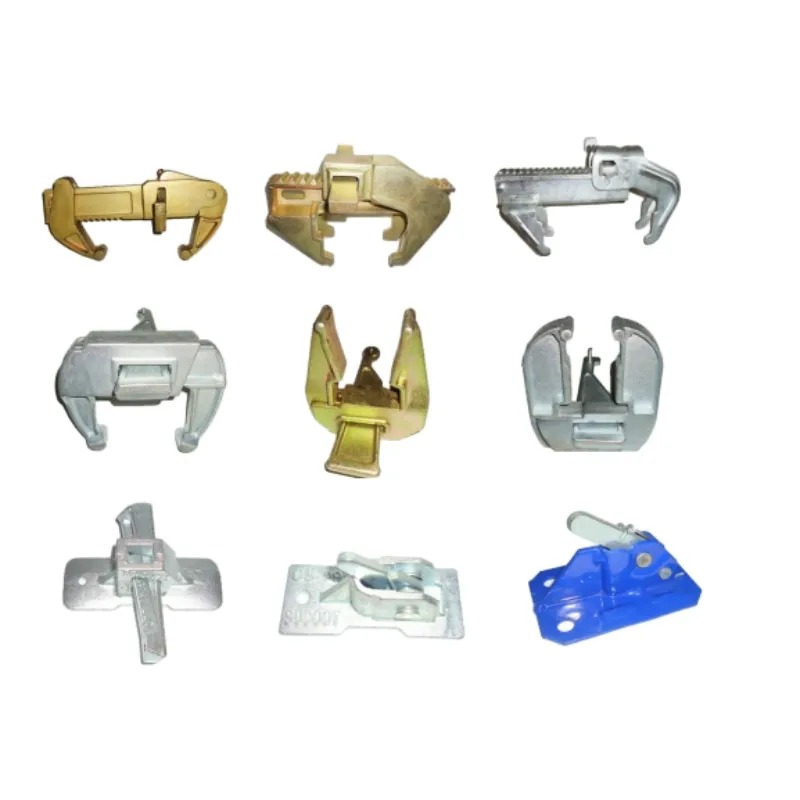
Ensuring Trust and Reliability: Quality Assurance, Warranty, and Customer Support for Formwork Clamps
For B2B buyers in the construction and industrial sectors, the decision to procure formwork clamp solutions extends far beyond initial product specifications; it encompasses a thorough evaluation of the manufacturer's commitment to quality assurance, robust warranty provisions, and comprehensive customer support. These elements collectively build trust and provide the assurance necessary for critical project execution. A reputable supplier of concrete formwork clamps will prominently feature their adherence to international quality management systems, such as ISO 9001:2015, demonstrating a systematic approach to consistent product quality. This extends to documented processes for raw material inspection, in-process quality checks during manufacturing (e.g., non-destructive testing for welds, dimensional accuracy checks using calibrated instruments), and final product inspection, including load testing and functional verification. Authority is further cemented by certifications from recognized third-party testing agencies or compliance with specific regional construction codes (e.g., AS/NZS 3610 for formwork in Australia/New Zealand, or CE marking for European market access), signifying that the product meets stringent safety and performance criteria. Beyond certifications, transparency in providing test data, material certificates (Mill Test Certificates or MTCs for steel), and quality control reports for specific batches enhances trustworthiness. For instance, detailed reports on ultimate load capacity and fatigue life, backed by accredited laboratory tests, offer unparalleled confidence to engineers. Delivery cycle management is another critical aspect that fosters trust. In construction, timely delivery of materials is paramount to maintaining project schedules. A reliable supplier will have well-defined logistics and supply chain management, offering clear lead times for standard products and realistic estimates for customized orders. They should also provide flexible shipping options and real-time tracking capabilities to keep clients informed. A robust warranty promise is a fundamental pillar of trustworthiness. This typically includes a guarantee against manufacturing defects and specifies the expected service life under normal operating conditions. For high-wear items like formwork clamp units, a warranty period of several years or a specified number of usage cycles (e.g., 5-year warranty or 2000 cycles) demonstrates the manufacturer's confidence in their product's durability. Crucially, a clear and accessible process for warranty claims and returns is essential, reflecting a customer-centric approach. Finally, superior customer support is vital for long-term partnerships. This includes pre-sales technical consultation to help clients select the most appropriate clamps for their project, responsive after-sales support for troubleshooting, and accessible channels for inquiries (e.g., dedicated hotlines, online portals, regional representatives). Training programs for on-site personnel on proper installation, usage, and maintenance of the formwork clamps can also be offered, enhancing safety and extending product life. Companies that offer comprehensive support packages, including spare parts availability and maintenance guides, demonstrate a holistic commitment to client success. For instance, a leading supplier may offer a guarantee on the availability of common spare parts for up to 10 years after product discontinuation. Such a multifaceted approach to quality assurance, delivery, warranty, and customer support not only mitigates risks for the buyer but also builds a foundation of long-term trust, ensuring that the critical components like formwork clamps perform reliably throughout the entire project lifecycle and beyond.
Frequently Asked Questions (FAQ) about Formwork Clamps
-
Q1: What are the primary differences between various types of formwork clamp designs, such as column clamps and concrete formwork clamps?
While all formwork clamps serve the fundamental purpose of securing formwork panels, their designs are optimized for specific applications and types of formwork. Column clamps are specifically engineered for the precise assembly and tightening of formwork around circular or rectangular columns. They often feature adjustable mechanisms that allow for a wide range of column dimensions and ensure a consistent, tight fit, which is crucial for achieving perfectly straight and dimensionally accurate columns. Their design typically includes robust corner pieces and adjustable connecting bars or screws that distribute clamping force evenly, preventing blowouts or deformation during concrete pouring. Some advanced column clamps, such as those inspired by proprietary systems like Doka clamp or Peri clamp designs, incorporate quick-release levers or integrated ratcheting mechanisms for rapid setup and dismantling, significantly enhancing efficiency on site. In contrast, the broader category of concrete formwork clamps encompasses a wider variety of clamping devices used for walls, beams, slabs, and specialized concrete structures. These can include wall clamps (often known as wedge clamps or snap ties), panel clamps that connect modular formwork systems, and specialized tie rod clamps that secure through-ties for larger wall sections. The key differentiator lies in their intended application and the specific structural challenge they are designed to address. Wall clamps, for example, primarily resist lateral pressure, while column clamps manage radial and lateral forces simultaneously. Each type is optimized for ease of use within its specific context, material compatibility, and the load conditions it is expected to endure. Therefore, understanding the distinct operational features and structural requirements for each type is crucial for selecting the appropriate clamping solution, ensuring both safety and project efficiency.
-
Q2: How do manufacturers ensure the durability and longevity of a formwork clamp, especially in harsh construction environments?
Ensuring the durability and longevity of a formwork clamp in harsh construction environments is a multi-faceted process rooted in superior material selection, advanced manufacturing techniques, and effective surface treatments. Manufacturers typically start with high-grade steel alloys that offer excellent tensile strength, yield strength, and resistance to fatigue. For example, specialized alloys like 40Cr steel or high-strength low-alloy structural steels are commonly used due to their inherent toughness and ability to withstand repeated stress cycles. The manufacturing process often involves hot forging, which refines the grain structure of the metal, eliminating internal defects and enhancing its overall mechanical properties, thereby increasing resistance to deformation and cracking under heavy loads. Precision CNC machining ensures that all components fit perfectly, reducing stress concentrations and wear points. Post-manufacturing, heat treatment processes such as quenching and tempering are applied to optimize the steel's hardness and ductility, making the clamp resilient against impact and abrasion. Crucially, the application of robust surface treatments plays a pivotal role in protecting the clamp from environmental degradation. Hot-dip galvanization, a process where steel is immersed in molten zinc, creates a thick, metallurgically bonded coating that provides superior long-term corrosion protection against moisture, concrete chemicals, and atmospheric pollutants. This contrasts sharply with electro-galvanizing or paint, which offer thinner, less durable coatings. Some specialized clamps may also feature powder coating for enhanced aesthetic appeal and additional resistance to scratching and chipping. Moreover, rigorous testing protocols, including salt spray tests (e.g., ASTM B117 standards) to simulate corrosive environments and extensive fatigue testing, validate the longevity claims. These tests ensure that the clamp formwork can withstand thousands of cycles of use without significant degradation in performance. By combining these advanced material, manufacturing, and protection strategies, manufacturers deliver clamps that maintain their structural integrity and operational efficiency over an extended service life, even when exposed to abrasive concrete, varying temperatures, and corrosive elements commonly found on construction sites.
-
Q3: What are the typical delivery timelines for customized formwork clamp orders, and what kind of post-purchase support can clients expect?
Delivery timelines for customized formwork clamp orders can vary significantly based on the complexity of the design, the volume of the order, material availability, and the manufacturer's current production schedule. For standard, off-the-shelf formwork clamps, typical lead times usually range from 2 to 4 weeks for domestic orders and 4 to 8 weeks for international shipments, depending on logistics. However, for highly customized solutions, where bespoke designs, specific material grades, or unique fabrication processes are required, the lead time will naturally be longer. This period typically includes design and engineering review (1-2 weeks), raw material procurement (1-3 weeks depending on specialization), manufacturing and surface treatment (3-6 weeks), and final quality control and packaging (1 week), before factoring in shipping transit times. A reputable manufacturer will provide a detailed project timeline, outlining each phase and estimated completion dates, keeping the client informed throughout the process. Transparency in communication, including any potential delays, is paramount. Regarding post-purchase support, clients can expect a comprehensive suite of services designed to ensure optimal product performance and customer satisfaction. This typically includes a robust product warranty, covering manufacturing defects for a specified period (e.g., 1-5 years or a certain number of usage cycles). Access to technical support is crucial, with dedicated hotlines or online portals for troubleshooting, installation guidance, and performance inquiries. Many leading manufacturers also offer on-site technical assistance, where their engineers or product specialists can visit the construction site to provide hands-on training for the installation crew, offer best practice advice, and assist with complex formwork setups involving specialized concrete formwork clamps. Furthermore, reliable suppliers ensure the availability of spare parts for their products, minimizing downtime in case of wear or damage. Comprehensive documentation, including detailed user manuals, maintenance guides, and safety datasheets, is also provided. Some companies even offer digital tools or apps that help calculate load requirements or optimize clamp spacing. The goal of this extensive post-purchase support is to maximize the service life of the formwork clamp, ensure safe operation, and reinforce the manufacturer's commitment to long-term client partnerships, thereby enhancing overall project efficiency and mitigating operational risks.
Further Resources and Citations
- ISO 9001:2015 Quality Management Systems - International Organization for Standardization
- ASTM B117 - Standard Practice for Operating Salt Spray (Fog) Apparatus - ASTM International
- EN 12812: Formwork - Performance requirements and general design - European Committee for Standardization
- American Concrete Institute (ACI) - Resources on Concrete Construction and Formwork
- Construction News UK - Technical Guides on Formwork Design and Practice
This is the first article
Latest News
-
High-Quality Tube & Clamp Scaffolding For SaleNewsAug.09,2025
-
Reliable Scaffolding Screw Jacks for Stable ShoringNewsAug.08,2025
-
Precision Stamping Hardware: Custom Metal ComponentsNewsAug.07,2025
-
Durable Concrete Bridge Formwork & Shoring SolutionsNewsAug.06,2025
-
Tube & Clamp Scaffolding for Sale - Durable & CustomizableNewsAug.05,2025



